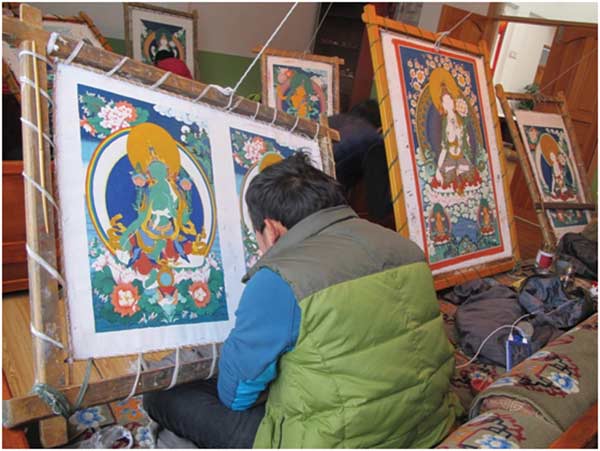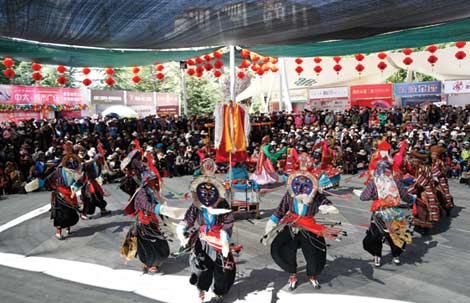Thangkas tell stories
Updated: 2014-11-01 23:20
(China Daily North America)
|
||||||||
 |
|
Thangkas paintings depict Buddhist life on cotton or silk applique. Palden Nyima / China Daily |
A thangka is a painting on cotton, or silk appliqué, usually depicting a Buddhist deity or scene. It often takes the form of a scroll banner but it is not flat like an oil or acrylic painting. Thang in Tibetan means to display and ka means, silk though most are painted on cotton.
It consists of a picture panel, which is then painted or embroidered over. Generally, thangkas last a long time and retain much of their luster, but because of their delicate nature they have to be kept in dry places where moisture will not affect the quality of the silk.
Thangkas served as important teaching tools depicting the life of the Buddha, various influential lamas and other deities and bodhisattvas. However, thangkas are not only limited to Buddha or Buddhist deities; paintings such as Tibetan medical tools and the medical sciences also are included.
What is believed to be the first thangka of Tibet depicted the dharma protection deity — the Palden Lhamo.
It is said that this thangka was painted by the Tibetan king Songtsen Gampo (AD 617-650) while his nose bled.
Between the seventh and the ninth centuries, the thangka art style in Tibet was dominated by Paldre — a Nepali style.

 Art Taipei 2014 draws international artists
Art Taipei 2014 draws international artists
 Tibetan culture to display splendor in Canada
Tibetan culture to display splendor in Canada
 Reclaiming a piece of history
Reclaiming a piece of history
 Across Americas over the week (Oct 24-30)
Across Americas over the week (Oct 24-30)
 Halloween haunts China as popularity grows
Halloween haunts China as popularity grows
 At least 4 killed in small plane crash in Kansas
At least 4 killed in small plane crash in Kansas
 Road trip to Arxan National Forest Park
Road trip to Arxan National Forest Park
 Top 10 richest Chinese in 2014
Top 10 richest Chinese in 2014
Most Viewed
Editor's Picks

|

|

|

|

|

|
Today's Top News
Consensus sought with US on governance of Internet
Space tourism set back by accident
Chinese Internet companies find Brazil attractive
US spaceship test flight failure kills at least one
Breast cancer a factor in Shanghai's low birth rate: doctor
The rise of intolerance
Olympics bid fuels drive for clean air
Lenovo buys Motorola Mobility
US Weekly

|

|







